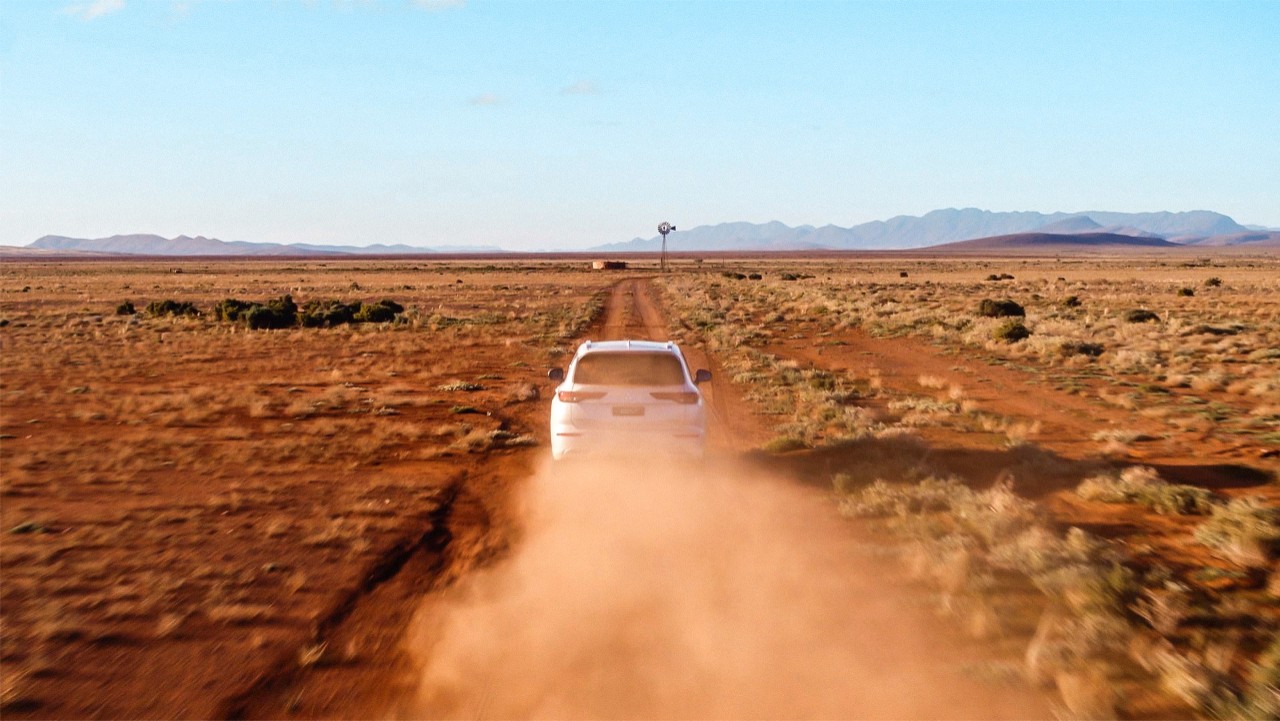Know the lay of the land.
Australia is a beautiful place, but seasoned bushies like Russell Coight know it can also be brutal. That’s why every great Australian adventure starts before you leave the driveway. Plan ahead and you won’t get Coight out!
The Outlander Plug-in Hybrid EV can travel vast distances using a combination of electric power and hybrid petrol. It can also recharge as you drive. Even so, always know the distances between towns and your destination, ensuring you have enough fuel and battery charge to get you there – and back. Work out where fuel or charging stations are available and if you’re unsure, carry suitable backup supplies.
Many remote roads can become impassable at certain times of the year and are closed to the public, especially in the wet season. Confirm access by visiting relevant road authority websites. Know where to get help, just in case you need it.
Spare a thought for spares.
Tough terrains can take their toll. If you’re venturing off-road or driving to remote locations it’s recommended to carry two spare tyre/wheel assemblies. You can purchase genuine spares for your Outlander Plug-in hybrid EV from Mitsubishi dealerships Australia-wide. Ensure tyres are rated for the kinds of surfaces you’ll be driving on, and carry the right equipment to change or repair a tyre/wheel assembly. You should be confident enough to do this by yourself. If not, familiarise yourself with the process before you leave home or travel with someone who has the know-how.
Hit the trail with a trailer.
While the Outlander’s interior offers plenty of room, if you’re going on a big adventure you may need to hitch a trailer for your gear. When fitted with a genuine Mitsubishi towbar accessory, the Outlander Plug-in Hybrid EV’s towing capacity is 1600kg with a 160kg towball download. Additional genuine Mitsubishi accessories such as roof racks and baskets allow you to bring even more equipment, but make sure not to exceed maximum load limits for your vehicle such as roof load, rear axle load and gross vehicle mass.
Generate your own power.
Charging in remote locations is possible if you have the right equipment. While the Outlander EV battery is capable of powering an entire camp site, solar panels and battery power inverters are now more compact, energy efficient and can help generate additional supplies for small appliances and creature comforts. Speak with an auto electrical specialist to ensure your system has the capacity to produce and store what you need.
Cool battery technology.
Temperatures can reach extremes in the outback. However, the Outlander Plug-in Hybrid EV’s battery system is ready for highs, lows and everything in between. In fact, it has its own independent battery cooling system that monitors and regulates correct operating temperatures when the vehicle is in the “READY” mode, or while charging.
Can the Outlander EV use OPAL fuel?
OPAL fuel available in some remote locations is very similar to standard 91RON unleaded petrol. Both are compatible with your Outlander Plug-in Hybrid EV.
Stay ahead with a level head.
Common sense, planning and preparation are the keys to a safe adventure. Always carry reserves such as food, water and fuel. Arm yourself with a first aid kit and basic skills. Bring the right equipment, maps and tools for your trip and know how to use them. Perform all your vehicle maintenance and safety checks before you hit the road. And remember, knowledge is power.
The Mitsubishi Outlander Plug-in Hybrid EV. Australia ready.

